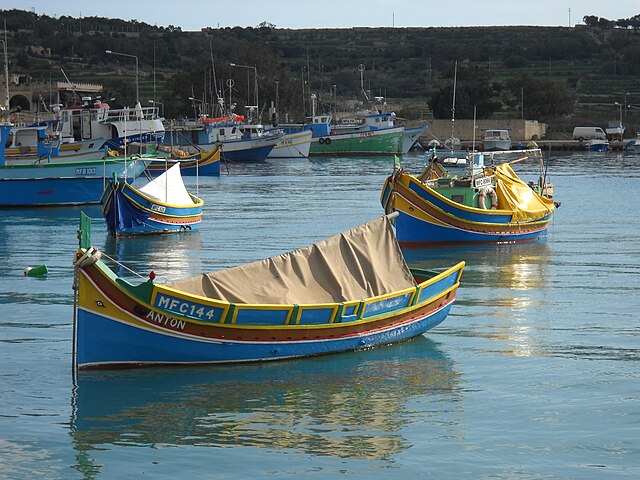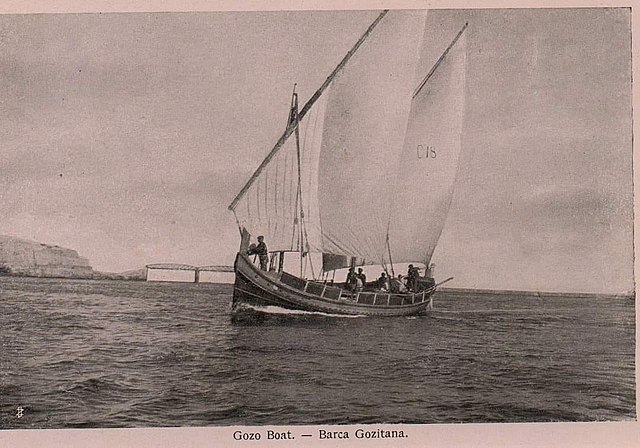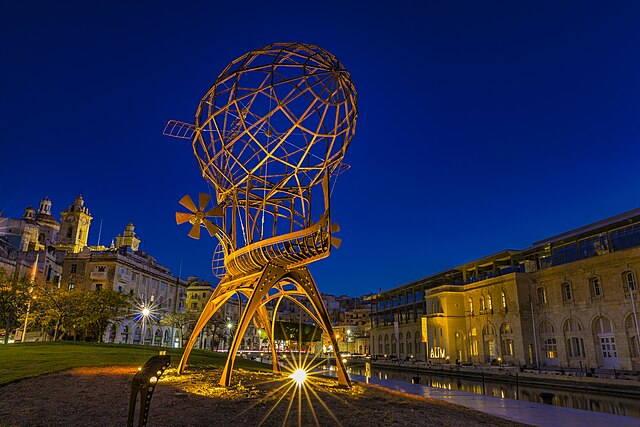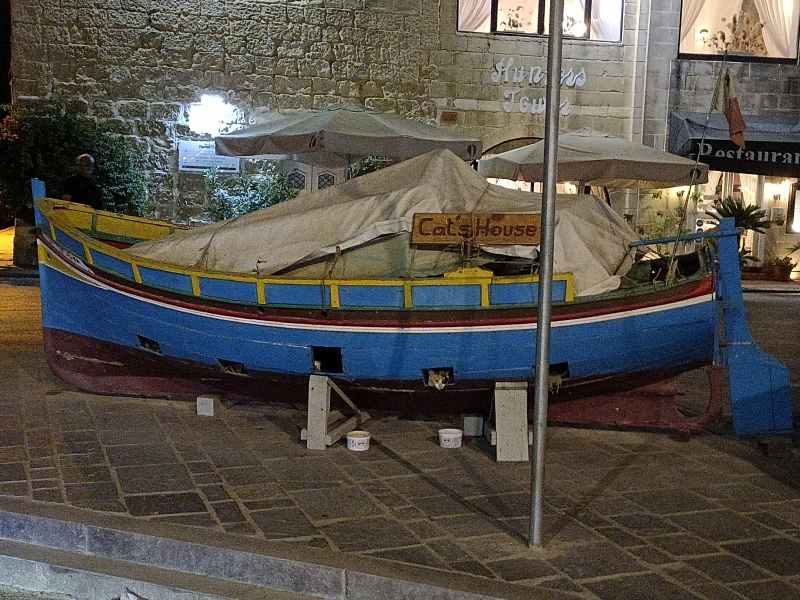| Malta Short Let: Cozy Stay in Gzira | |
|
Sliema Area Modern Designer Finished 2 Bedrooms + Games Room. First floor with Maltese Balcony Large back Terrace with swinging sofa Fully Airconditioned + Full Kitchen 3 TVs, including 65” with backlight. |
 |
|
Book Now: Google Travel | Direct (Cheapest) | Booking.com | Airbnb |
|
Malta’s maritime history is rich and vibrant, with traditional boats playing an essential role in both its culture and its daily life for centuries. From iconic fishing vessels to elegant harbor ferries, these boats are not only modes of transport but also symbols of craftsmanship, endurance, and tradition. Here’s a closer look at the most iconic Maltese boats still celebrated today.
Dgħajsa tal-Pass: The Harbour Boat

Pic Attribute: Kritzolina
The dgħajsa tal-pass, or Maltese harbor boat, is perhaps the most emblematic of Malta’s traditional vessels. Designed to ferry passengers across the Grand Harbour, this boat boasts an elongated, graceful shape with high, decorative prow and stern pieces. Its design allows for efficient maneuvering, especially in the narrow harbor channels. While today’s boats often come with a motor, many retain traditional rowing practices, offering passengers a serene, nostalgic experience. With roots possibly tracing back to Phoenician influence, the dgħajsa tal-pass is considered a “cousin” of the Venetian gondola, yet it remains distinctly Maltese.
Luzzu: The Vibrant Fishing Boat

Pic attriute: Taueres
Known for its bold, bright colors, the luzzu is Malta’s classic fishing boat, found primarily in traditional fishing villages like Marsaxlokk. Painted in blue, red, yellow, and green, the luzzu also features an “Eye of Horus” on the bow to protect against danger—a tradition thought to have originated with the Phoenicians. This double-ended boat is valued for its stability in rough seas, a crucial trait for Maltese fishermen. It remains the island’s most popular fishing vessel, blending function and folklore with its colorful appearance and protective symbolism.
Kajjik: A Variant of the Luzzu
Similar to the luzzu, the kajjik is another fishing boat type often painted in traditional colors. Unlike the luzzu, however, the kajjik has a square transom, or stern, making it slightly shorter and broader at the back. This design allows for different net-casting techniques and makes it easier to steer in shallow waters near the shore. The kajjik is a less common sight than the luzzu, yet it remains an important part of Malta’s fishing community, representing a subtle evolution of the traditional design.
Frejgatina: The Traditional Racing and Transport Boat
Dgħajsa tal-Latini: The Gozo Boat

The dgħajsa tal-latini, or Gozo boat, is an impressive vessel that once ferried passengers and cargo between Malta and Gozo, particularly before the advent of modern ferries. Distinguished by its tall, triangular lateen sail, the dgħajsa tal-latini could easily navigate long distances using wind power alone. Measuring between 45 and 50 feet, it was painted in Malta’s characteristic maritime colors: green, blue, red, and yellow. Heritage Malta is currently restoring one of the few surviving examples, aiming to preserve this critical piece of Malta’s maritime history for future generations.
Ferilla: The Coastal Trader
The ferilla is one of Malta’s lesser-known traditional boats. While primarily used historically for coastal trade along the Maltese archipelago, it’s understood that the ferilla, or a variant of it, also participated in traditional races like the September Regatta before being succeeded in that role by boat types such as the frejgatina. Smaller than the dgħajsa tal-latini, the trading ferilla typically relied on oars or small sails to transport goods like grain, fruits, and fish between villages. This boat was a lifeline for many coastal communities before modern infrastructure took over, allowing trade and resources to circulate within the islands. Today, the ferilla has mostly disappeared, but its legacy as both a workboat and a former regatta participant remains in Malta’s coastal folklore and maritime history
Dgħajsa tar-Riħ: A Sculptural Tribute

Pic Attribute : Marika Caruana
Although it’s not a functional boat, the dgħajsa tar-riħ sculpture on Bormla’s Deck 1 is a powerful tribute to Malta’s traditional boats. Created by Maltese artist Matthew Pandolfino, this nine-meter-long sculpture combines the dgħajsa tal-pass with a zeppelin, representing a fusion of history and imagination. This kinetic sculpture moves with the wind, reminding locals and tourists alike of Malta’s enduring relationship with the sea. It’s a unique interpretation, highlighting how deeply embedded traditional boats are in Malta’s cultural identity.
Malta’s traditional boats, with their unique designs, vibrant colors, and historical roles, are a testament to the island’s enduring maritime spirit. Each boat tells a story of resilience, adaptation, and local pride, from the hard-working fishing luzzu to the elegant dgħajsa tal-pass that ferries visitors across the harbor to this day. Together, they form a tapestry of craftsmanship and heritage that makes Malta’s waters as colorful as its history.








